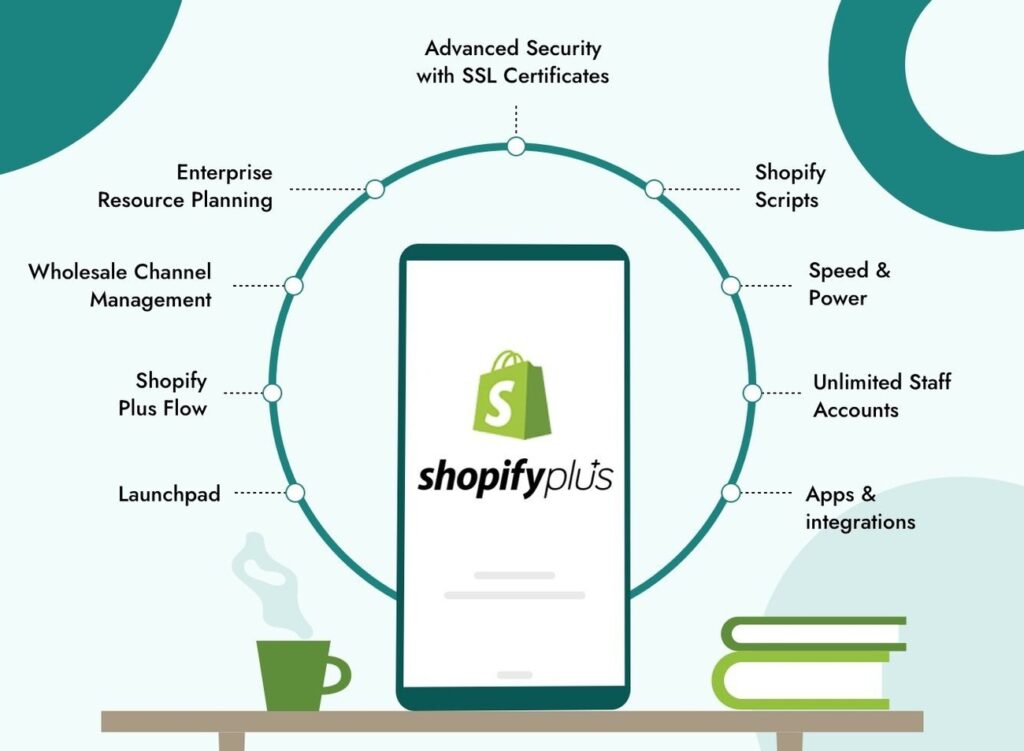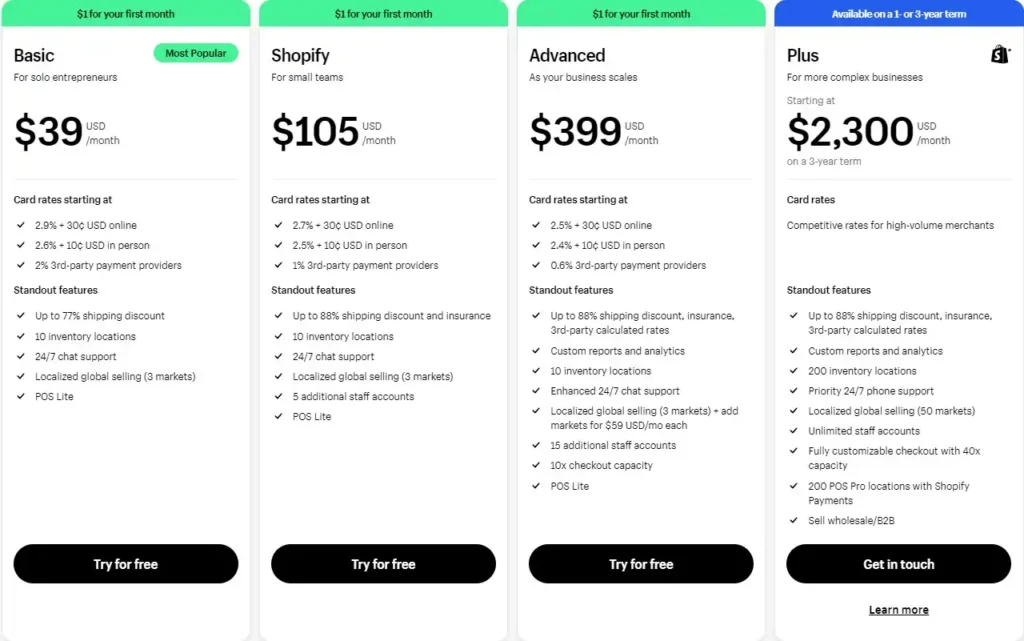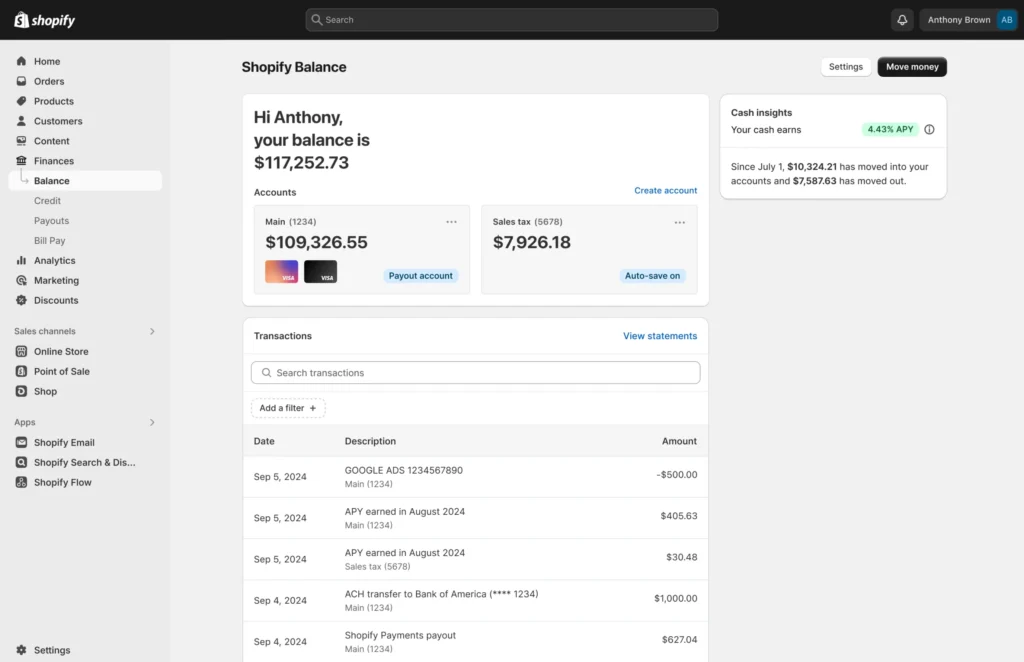Shopify Plus Pricing Revealed: The True Cost in 2025 [Expert Breakdown]
17 min read
Shopify Plus pricing begins at $2,300 per month. This represents a most important investment that growing businesses need to make. Major brands like Heinz and Red Bull trust this enterprise ecommerce platform, though businesses need to look beyond the base price to understand its true cost.
The total cost to run a Shopify Plus store can substantially exceed $24,000 annually after factoring in all components. Variable platform fees of 0.25% apply to businesses that earn over $800,000 monthly, while custom theme development costs range between $2,000 and $15,000. This detailed guide helps you understand your business’s exact Shopify Plus costs in 2025.
Understanding the Shopify Plus Base Price

Shopify’s enterprise solution uses a tiered pricing approach that depends on commitment length and business volume. The platform’s pricing models adapt to suit different business needs and growth stages.
Understanding the Shopify Plus Base Price
The sticker price is just the beginning when you evaluate enterprise ecommerce platforms. Shopify Plus’s pricing structure accommodates businesses at various growth stages through a well-designed system.
Monthly license fee explained
Shopify Plus platform’s standard setups and integrations come with a predictable monthly license fee. Businesses pay $2,300 per month with a 3-year commitment. This base price gives you access to the full suite of enterprise-level features that set Shopify Plus apart from standard Shopify plans.
Your monthly fee gives you:
- Full access to enterprise-level features and tools
- A dedicated Launch Engineer to support your setup process
- Advanced automation capabilities through Shopify Flow
- Custom checkout options with Shopify Scripts
- Access to the specialized Shopify Plus Partner network
The base fee also lets you create up to 9 expansion stores under a single license. Merchants utilize these expansion stores to build presence in different countries with localized currency, language, and content options. Your $2,300 monthly investment spreads across multiple storefronts, which can lower your per-store cost.
Shopify offers an alternative to the flat fee structure for businesses with complex requirements or higher transaction volumes. Your store transitions to a variable pricing model once it exceeds $800,000 in monthly revenue. You then pay 0.25% of your monthly sales volume. Your monthly fees will change based on your success instead of staying fixed.
Contract length and pricing tiers
Your total investment largely depends on the contract duration. Shopify Plus offers 1-year and 3-year terms. The 1-year term costs $2,500 monthly, while the 3-year option provides a discount at $2,300 per month.
Businesses with complex needs or substantial revenue face a more nuanced pricing structure. The 1-year option charges 0.40% of direct-to-consumer (D2C) volume and 0.18% of business-to-business (B2B) volume, or a minimum of $2,500 (whichever is higher). The 3-year contract offers better rates at 0.35% of monthly sales or a minimum of $2,300 (whichever is higher).
Businesses generating between $0 and $800,000 in monthly revenue pay the flat rate of $2,300 with a 3-year term. Revenue above this threshold incurs a monthly fee of 0.25% of your store’s revenue. Your annual Shopify Plus fees amount to $27,600 if your stores process less than $9.6 million yearly.
Shopify Plus requires a minimum commitment period. Some sources mention a 12-month minimum contract, but official information confirms 1-year or 3-year terms. You can only cancel when your term commitment ends.
The base price represents a substantial investment compared to standard Shopify plans. Experienced merchants often negotiate directly with Shopify’s sales team. These discussions might lead to discounts or alternative pricing structures that better match your business needs and budget.
Variable Platform Fees Based on Revenue

Shopify Plus charges a base monthly license fee and uses a sliding scale pricing model that grows with your business. You need to understand these variable fees to forecast your budget and evaluate the platform’s long-term value.
Variable Platform Fees Based on Revenue
Your Shopify Plus costs will increase as your ecommerce operation grows. The platform rewards long-term commitment through a revenue-based fee structure that recognizes different business models.
How revenue affects your monthly cost
The platform’s 5-year old revenue thresholds determine your monthly costs. Your standard license fee applies when your monthly revenue stays between $0-$800,000 [$62]. The pricing model changes from a flat fee to a percentage-based system once sales exceed $800,000 [$64].
Shopify Plus will charge 0.25% of your monthly revenue instead of the flat fee at this point [$62]. A store processing $1,000,000 in a month would pay $2,500 for that period [$62]. Your platform costs will rise proportionally with your success.
High-volume merchants get protection through an upper limit. Your variable fee won’t exceed $40,000 monthly or $480,000 yearly, no matter how much your business grows [$64]. Enterprise-level planning becomes more predictable with this cap.
The variable fee structure exists because it:
- Makes Shopify successful when you succeed
- Matches pricing to the value you receive
- Creates fairness across different business sizes
Shopify takes a percentage of revenue rather than increasing the flat fee to handle natural sales fluctuations throughout the year [$72]. Seasonal businesses and those in rapid growth phases benefit from this approach.
D2C vs B2B pricing models
Shopify Plus pricing now separates direct-to-consumer (D2C) and business-to-business (B2B) revenue streams [$71]. This change acknowledges these business models’ fundamental differences.
The platform fee becomes 0.40% of D2C volume but only 0.18% of B2B volume for merchants with 1-year contracts (or $2,500 minimum, whichever is higher) [$71]. The 3-year option gives you a better rate at 0.35% of monthly sales (or $2,300 minimum, whichever is higher) [$71].
These contrasting sales channels make this approach logical. B2B transactions usually mean higher order values but lower margins. One merchant explains, “B2B clients equate to a large percentage of our revenue… we actually make more revenue with one B2B client than with 100 B2C clients” [$53].
The pricing structure mirrors these real-life operations. You can set up your B2B shop in two main ways, based on whether you sell wholesale alongside retail [$54]:
- A blended model – one store manages both B2B and D2C customers
- A dedicated model – separate stores for each customer segment using Expansion Stores
Remember that a dedicated model might cost more because you’ll need to maintain separate product catalogs and sync inventory across multiple stores [$54].
Shopify Plus pricing aims to balance fair costs with value as your business grows. The fee structure adapts while you evolve from mid-sized to enterprise-level, creating sustainable growth for both sides of the partnership.
Transaction Fees and Payment Processing Costs

Image Source: Qikify
Your Shopify Plus store’s payment processing fees directly affect your bottom line. Learning about these costs helps you plan your finances better and optimize your ecommerce profits.
Transaction Fees and Payment Processing Costs
Shopify Plus stores face two main types of transaction expenses: payment processing fees and possible third-party gateway charges. Your choice of payment provider and international sales approach substantially changes these costs.
Using Shopify Payments vs third-party gateways
Shopify gives you two main ways to process payments. Each option brings different financial outcomes for your business.
Shopify Payments (Official Gateway)
Choosing Shopify Payments as your main payment gateway gives you these benefits:
- No additional third-party transaction fees
- The lowest card processing rates available on any Shopify plan
- Direct integration without separate merchant account setup
Plus merchants in the United States who use Shopify Payments pay 2.15% + $0.30 for each domestic Visa and Mastercard payment. American Express and international cards cost 3.15% + $0.30 per transaction. UK merchants get a better deal with a flat rate of 1.6% + £0.20 for all card types.
Third-Party Payment Processors
Third-party processors might look good at first, especially if you already work with payment providers. In spite of that, this option costs you more:
- Your processor’s standard fees stay the same
- Shopify adds 0.20% per transaction for security and compliance
- They calculate this fee as: [(product cost – discounts) + tax + shipping] × rate
From a business point of view, processing payments through Authorize.net at their 1.8% rate means you’ll actually pay 1.95% (1.8% + 0.15%) on Shopify Plus.
The good news is transaction fees don’t apply to point-of-sale orders, cash on delivery, bank deposits, checks, gift cards, or test orders. This helps merchants save money if they sell a lot in person.
International transaction considerations
Global sales add extra fee layers that can eat into your Shopify Plus store’s profits.
Currency Conversion
Payments in different currencies from your payout currency mean Shopify applies:
- A market-rate currency conversion (without markup)
- A currency conversion fee of 1.5% for US-based stores or 2% for stores elsewhere
Shopify adds this conversion fee to your customer’s price to help cover your costs. This creates clear pricing at checkout instead of surprising customers with extra credit card fees for currency exchange.
Cross-Border Processing
International transactions cost more than domestic ones. You’ll pay about 3.9% + $0.30 on average for international payments, which is much higher than domestic rates.
Your international customers might also pay extra fees to their banks or credit card companies. These international or foreign transaction fees apply even when customers pay in their local currency. While banks collect these fees and not Shopify, they can affect buying decisions.
Geographic Availability
A vital factor is that Shopify Payments isn’t available everywhere. Businesses in countries without Shopify Payments support must use third-party processors and pay extra transaction fees. This raises costs for merchants in certain regions.
Note that transaction costs add up with every sale. Small percentage differences can substantially affect your profit margins as you grow. Smart merchants evaluate these fees against their business model and sales volume to get the most from their Shopify Plus investment.
Additional Shopify Plus Fees You Should Know
The base subscription is your main cost with Shopify Plus, but there are many more fees that affect your total expense. Your budget planning needs to account for these extra charges beyond the core platform and transaction fees.
Additional Shopify Plus Fees You Should Know
Running an enterprise ecommerce operation costs more than just the headline subscription price. Let’s get into those often-overlooked fees that add to your overall Shopify Plus pricing.
Shipping label costs
Shopify Shipping lets you print labels right from your admin panel, though these costs are separate from your main Shopify Plus subscription. Your shipping label charges come in USD no matter where your store is located. Stores in Canada, Australia, France, or the United Kingdom see labels in their local currency when buying, but the actual charge shows up in USD on the invoice.
The platform uses threshold billing for shipping labels. This means you’ll get an invoice as soon as you hit a certain spending amount in your billing cycle. You can keep buying labels up to 10% of your current threshold while your payment processes. Your threshold starts fresh after the invoice processes.
Price adjustments on labels are another cost you might face. These happen when shipping carriers find that wrong information led to incorrect label pricing. Here’s what usually causes adjustments:
- Package weight or dimensions don’t match
- Wrong mail class picked
- Flat rate labels used with weight-based rate boxes (or vice versa)
- Packages that aren’t supported (like tube-shaped ones)
Getting your package measurements right helps avoid surprise charges. Carriers like UPS can charge big fees—this is a big deal as it means that they might charge over $875 for packages that exceed their weight limits.
Tap to Pay on iPhone
Every Shopify plan, including Plus, comes with Tap to Pay on iPhone. Merchants can take contactless payments directly on their iPhone without extra hardware.
Your store needs to meet these requirements to use this feature:
- Location in Australia, Canada, France, Italy, Netherlands, UK, or US (except Puerto Rico)
- Active Shopify Payments
- Shopify POS app on iPhone XS or newer with latest iOS
The system works with all contactless credit or debit cards and digital wallets. You’ll pay your standard in-person credit card rates from Shopify Payments for these transactions.
Stores can process up to 100 Tap-to-Pay transactions each month at no extra cost. After that, each transaction costs $0.25.
Email and tax calculation fees
Shopify Tax makes it easier to handle tax calculations, billing, and threshold tracking for merchants selling in the US, UK, and EU. Your location and sales volume determine what you pay.
US merchants don’t pay anything for their first $100,000 in global sales each calendar year. After that, the fees change based on where you collect sales tax:
- US: 0.35% (0.25% for Plus stores), max $0.99 per order
- UK and EU: 0.25% (0.15% for Plus stores), max $0.99 per order
EU merchants get free tax calculation on their first €100,000 in yearly global sales. UK merchants don’t pay anything on their first £100,000 in yearly global sales.
Shopify caps these extra charges at $5,000 per region yearly for tax calculation services, no matter how much you sell.
You only pay the calculation fee for orders from places where you collect tax, even if some products are tax-exempt. Orders from regions where you don’t collect tax or those imported from outside Shopify don’t incur this fee.
Customization and Development Costs
Monthly subscription fees are just the start. Your largest investment when launching a Shopify Plus store will likely be customization and development expenses. These costs can vary dramatically based on your business needs and technical complexity.
Theme customization pricing
Your Shopify Plus storefront customization can range from small tweaks to complete rebuilds:
- Simple customizations (layout changes, minor tweaks): $2,000-$5,000
- Moderate theme updates: $5,000-$15,000
- Full custom theme development: $10,000-$30,000
- Headless commerce setup (React, Vue.js front-end): $50,000+
You’ll see a substantial price difference between using a pre-designed theme with minor changes versus building a fully custom store. Brands looking to stand out typically invest in unique designs, with starting prices around $30,000.
Some merchants take a different approach by using advanced Shopify apps that offer customization features at a fraction of custom development costs. To cite an instance, specialized apps can handle checkout modifications instead of custom extensions.
Custom scripts and API integrations
Shopify Plus comes with built-in automation tools like Shopify Flow and Shopify Scripts. These powerful features need technical expertise to work properly:
- Custom checkout scripts: $2,000-$10,000+
- Advanced API integrations: $15,000-$30,000
- Enterprise-level development: $30,000+
Your product catalog’s complexity directly affects development time and costs. Stores with hundreds or thousands of SKUs need advanced filtering, categorization, and import tools that require extra development work.
Selling internationally often requires multiple payment gateway integrations. Each integration adds to your total development investment while increasing both functionality and costs.
Your business growth will necessitate ongoing maintenance for custom scripts, checkout modifications, and API updates, which leads to continued developer expenses.
Hiring Shopify Plus developers
Developer costs follow geographic patterns with notable regional variations:
Average hourly rates by region:
- North America: $50-$100+
- Western Europe: $40-$90
- Eastern Europe: $20-$50
- Asia: $15-$40
- Africa: $15-$30
A developer’s experience level significantly affects pricing. Shopify Plus specialists’ rates typically range from $75-$200 per hour. These developers earn premium rates due to their enterprise-level implementation expertise.
Businesses usually choose between two payment models:
Hourly rate model: This works best for evolving projects without a clearly defined scope. You pay for actual time spent, which suits projects where requirements might change during development.
Fixed price model: This suits well-defined projects with clear requirements. Common fixed-price projects average:
- Store setup: $5,000-$25,000
- Performance optimization: $500-$5,000
- Store migration: $500-$5,000
Along with these immediate costs, you should factor in ongoing maintenance and support expenses. Your store will need updates, new features, and bug fixes after launch, which might require a monthly retainer or as-needed services.
A Shopify Plus store’s total development cost depends on your specific needs. Simple implementations start at $25,000, while complex, fully-customized enterprise stores can exceed $200,000.
Third-Party Apps and Software Expenses

Image Source: Analyzify
Most enterprise stores need extra third-party apps to expand their Shopify Plus capabilities. These software costs make up a big chunk of your running expenses and change as your business grows.
Third-Party Apps and Software Expenses
The Shopify ecosystem has over 10,000 apps to boost store functionality. You need to understand these costs to budget well and get the most from your platform investment.
Essential apps and their monthly costs
Shopify Plus comes with strong features, but it can’t replace all third-party solutions—though it works well for many automation and customization tools. Your growing business will need specialized apps that match your specific needs.
Here’s what you might spend monthly on key Shopify Plus apps:
- Email & SMS Marketing: Klaviyo costs $1,500+ monthly (scales with contact volume)
- Personalization: Rebuy AI ranges from $500-$2,000 monthly
- Subscription Management: Recharge averages $300-$1,000 monthly
- Page Builders: Shogun or GemPages cost $200-$1,000 monthly
- Analytics Tools: Advanced solutions like Triple Whale run $100-$500 monthly
Most enterprise tools use tiered pricing. Simple features might be free, but premium features usually cost between $30-$500 monthly. Connecting Shopify Plus to ERP or CRM systems is a big deal as it means that costs can go beyond $1,000 monthly.
Yes, it is common for high-revenue Shopify Plus stores to spend $2,000-$5,000 monthly just on essential apps. These costs vary based on your store’s complexity and needs.
How app usage scales with business growth
Your app costs usually grow with your business volume. Many Shopify Plus apps base their pricing on:
- Number of orders processed
- Customer database size
- Monthly store traffic
- Revenue generated
To name just one example, see how email platforms like Klaviyo price their services based on contact list size. A $100 monthly expense can quickly jump to $1,500+ as your customer base grows.
Integration costs also grow with your business. Your Shopify Plus store will need connections to external systems like:
- CRM platforms like Salesforce or HubSpot
- Inventory management solutions
- Third-party logistics providers
- Marketing automation tools
These integrations need subscription-based connector apps or custom API development. Custom integrations that need developer support add both features and costs.
Regular app audits become crucial as costs pile up. Merchants often pay for overlapping features or unused tools. You can cut monthly costs by reviewing and removing redundant apps.
Sometimes, building custom features works out cheaper than paying for app subscriptions, especially for core business functions. Looking at each app’s ROI helps you decide if custom solutions would work better for your long-term needs.
Migration and Setup Costs for New Users
Moving to Shopify Plus requires substantial one-time costs beyond monthly fees. Many merchants don’t anticipate these migration expenses. The investment builds strong foundations for your ecommerce business.
Migration and Setup Costs for New Users
Data migration pricing range
Your Shopify Plus migration costs can vary widely based on multiple factors. We found that simple transfers start at $5,000. Complex migrations for larger businesses can exceed $20,000.
Several elements affect your migration costs:
- Store size complexity: Your customer records and order history volume
- Current platform compatibility: How easily data exports from your system
- SEO requirements: The number of URLs that need 301 redirects
- Migration timing: Your need for batch or phased migration
The migration must transfer these vital data types:
- Order history (vital for customer service)
- Customer accounts and profiles
- Product catalog and inventory
- Customer reviews and ratings
- URL structures and redirects (to maintain SEO)
SEO rebuilding needs a separate budget starting at $5,000. Search ranking preservation demands careful URL mapping and redirect setup.
Setup time and cost implications
Shopify Plus migration takes 90 days on average. Merchants must run both platforms during this time. This means paying for the existing platform and Shopify Plus simultaneously.
Running parallel systems creates additional costs because merchants must:
- Pay two platform subscriptions at once
- Assign staff to manage the transition
- Handle possible sales disruptions
- Manage customer service across different systems
Expert help adds to these indirect costs. Shopify Plus developers’ rates range from $75-$200 per hour. Their expertise justifies the premium for enterprise implementations.
Standard Shopify users have a smoother upgrade path that takes just 24 business hours. The transition still needs careful planning with these steps:
- Back up all store data
- Check third-party integration updates
- Test store functions before launch
- Set up staff accounts and permissions
The platform comparison should look beyond subscription differences. A full picture of total cost of ownership (TCO) combines implementation, development, data migration and staff training costs. These elements show your true Shopify Plus investment.
How to Reduce Shopify Plus Costs and Maximize ROI

Image Source: First Pier
How to Reduce Shopify Plus Costs and Maximize ROI
Smart cost management can boost your returns on Shopify Plus’s enterprise-level investment. Strategic planning and careful analysis help merchants cut expenses while keeping all platform benefits.
Negotiating with Shopify
Businesses with high sales volumes can save money through direct talks with Shopify. Your high transaction volumes on Shopify Plus might qualify you for lower payment processing rates. Small reductions in these rates add up to big savings as percentages multiply with each sale.
Here’s how to start these talks:
- Contact Shopify’s merchant success team directly
- Prepare information about your current and expected sales volume
- Pick the right moment—renewal periods give you more bargaining power
Choosing the right apps and services
App costs pile up fast, and many stores pay for features they already have. A full review of your app ecosystem often shows tools that do the same thing. You can be strategic by following these practices:
Keep your app integrations low because too many apps drive up monthly costs and slow down your site. Pick apps that combine several features under one subscription. This approach improves efficiency and keeps costs in check.
Regular ROI checks on each app show whether building custom solutions costs less than paying subscription fees, especially for core business features. Note that Shopify Plus won’t replace every third-party solution—but it can stand in for many automation and customization tools.
Avoiding unnecessary customizations
Custom development costs a lot, but you can cut these expenses. Pre-built themes work well instead of fully custom designs in most cases. Ready-made theme sections make front-end implementation easier during design.
These steps help optimize your investment:
- Compress images and videos without losing quality
- Look at platform data to find elements that don’t perform well
- Let your team handle routine content updates instead of hiring developers
Your Shopify Plus ROI gets better with constant review and fine-tuning. Working with experienced developers helps spot needed changes to boost performance. This approach ensures your enterprise platform gives you the best value for your digital commerce investment.
Conclusion
Shopify Plus pricing showcases the platform’s enterprise-grade capabilities. The base fee starts at $2,300 monthly. These costs arrange perfectly with the reliable features and flexibility needed by growing ecommerce operations.
Smart merchants know that success on Shopify Plus just needs proper financial planning. The total investment includes platform fees, payment processing costs, development work, and key third-party apps. Most stores invest between $24,000 and $50,000 yearly based on their customization requirements and sales volume.
Several strategies can help you reduce these costs effectively. Stores save money by negotiating processing rates, removing unnecessary apps, and picking pre-built solutions instead of custom development. On top of that, longer contracts usually come with better rates. The 3-year commitment makes sense to think over for businesses more than 2 years old.
Note that Shopify Plus costs grow with your success. The original expenses might look high, but the platform’s enterprise features paired with smart cost management can bring excellent returns as your business expands.
FAQs
Q1. What is the base pricing structure for Shopify Plus? Shopify Plus starts at $2,300 per month for a 3-year contract or $2,500 per month for a 1-year contract. However, once your store exceeds $800,000 in monthly revenue, pricing shifts to a percentage-based model of 0.25% of monthly sales.
Q2. How do transaction fees work with Shopify Plus? When using Shopify Payments, there are no additional transaction fees. For US merchants, domestic Visa and Mastercard payments typically cost 2.15% + $0.30 per transaction, while international cards and American Express cost 3.15% + $0.30 per transaction.
Q3. What additional costs should I consider beyond the base Shopify Plus subscription? Beyond the base fee, consider costs for theme customization ($2,000-$30,000+), app subscriptions ($2,000-$5,000 monthly), custom development ($75-$200 per hour), and data migration ($5,000-$20,000+). These vary based on your specific business needs and complexity.
Q4. How can I reduce my Shopify Plus expenses? To reduce costs, consider negotiating rates with Shopify for high sales volumes, carefully selecting essential apps to avoid redundancy, minimizing custom development where possible, and opting for longer contract terms to secure better rates.
Q5. Is upgrading to Shopify Plus worth the investment? Shopify Plus is typically worth the investment for businesses generating over $1 million in annual revenue or those requiring advanced features like custom checkout, multi-store management, or B2B functionality. For smaller operations, Shopify Advanced at $399/month may be more cost-effective.
More on Afrishervi







